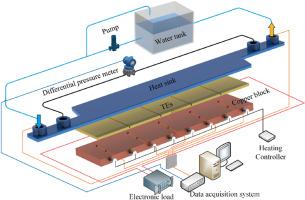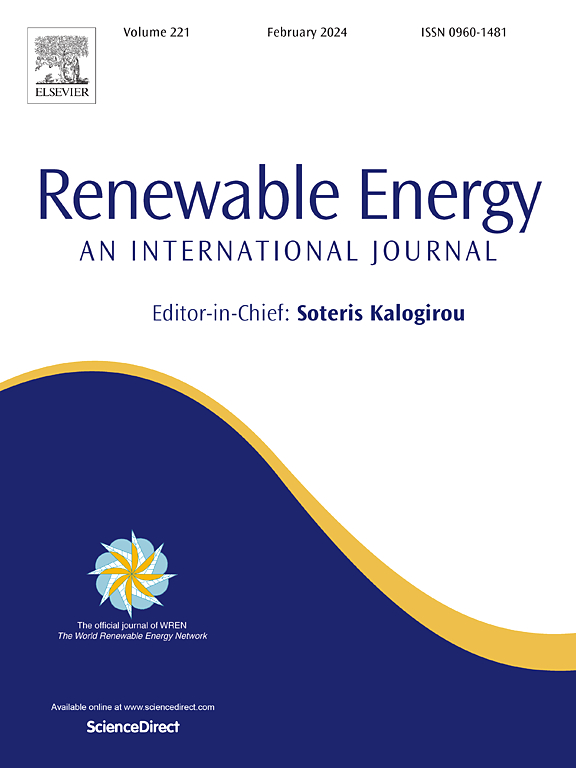Optimized thermoelectric generation for efficient low-medium temperature geothermal energy harvesting
IF 9.1
1区 工程技术
Q1 ENERGY & FUELS
引用次数: 0
Abstract
This paper aims to design and evaluate a thermoelectric generation system optimized for low-to-medium temperature geothermal energy, focusing on maximizing power output and system efficiency. A one-dimensional mathematical model based on energy balance is employed for a single thermoelectric element and subsequently scaled to a 600 thermoelectric generators (TEGs) module. The Peltier, Fourier, and Joule heating effects are included in the analysis, whereas the radiation and convection effects are neglected. The impact of various 2D and 3D layouts of thermoelectric generators (TEGs) and temperature variations on power generation and performance is examined. An experiment is performed to observe the power capacity of a module consisting of five thermoelectric generators. These experimental observations validate the analytical model, and reference properties are adopted to predict more complex modules. This work aims to simulate the optimal design of a TEG module, utilizing the temperature difference to generate 1 kW of power. For this purpose, a module comprising of 600 TEGs is analyzed in various layouts. Based on experimental results for the temperature difference , it is proposed that a compact module consisting of 600 TEGs with a 3D design of 10 × 12 × 5 will be suitable and cost-effective to generate 1 kW power.

优化热电发电,实现高效中低温地热能收集
本文旨在设计和评估一种针对中低温地热能优化的热电发电系统,以最大的功率输出和系统效率为重点。基于能量平衡的一维数学模型用于单个热电元件,随后缩放到600个热电发电机(teg)模块。珀尔帖、傅立叶和焦耳热效应包括在分析中,而辐射和对流效应被忽略。研究了热电发电机(teg)的各种二维和三维布局以及温度变化对发电和性能的影响。对一个由5个热电发电机组成的模块的功率容量进行了实验研究。这些实验结果验证了分析模型的正确性,并采用参考性质来预测更复杂的模块。这项工作旨在模拟TEG模块的最佳设计,利用温差产生1kw的功率。为此,分析了一个由600个teg组成的模块的各种布局。根据温差ΔT=96.4Co的实验结果,提出了一个由600个teg组成的紧凑模块,3D设计为10 × 12 × 5,可以产生1 kW的功率,并且具有成本效益。
本文章由计算机程序翻译,如有差异,请以英文原文为准。
求助全文
约1分钟内获得全文
求助全文
来源期刊

Renewable Energy
工程技术-能源与燃料
CiteScore
18.40
自引率
9.20%
发文量
1955
审稿时长
6.6 months
期刊介绍:
Renewable Energy journal is dedicated to advancing knowledge and disseminating insights on various topics and technologies within renewable energy systems and components. Our mission is to support researchers, engineers, economists, manufacturers, NGOs, associations, and societies in staying updated on new developments in their respective fields and applying alternative energy solutions to current practices.
As an international, multidisciplinary journal in renewable energy engineering and research, we strive to be a premier peer-reviewed platform and a trusted source of original research and reviews in the field of renewable energy. Join us in our endeavor to drive innovation and progress in sustainable energy solutions.
 求助内容:
求助内容: 应助结果提醒方式:
应助结果提醒方式:


